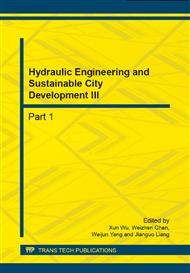p.1127
p.1131
p.1137
p.1141
p.1146
p.1151
p.1155
p.1159
p.1163
Rationality Study of Establishing Nature Reserve in Luosuo River from the Point of Fish
Abstract:
Hydropower development and effects on fish assemblages by dams in Lancang River Basin have arisen great concerns. As a compensation measure, Xishuangbanna State Nature Reserve was established at Luosuo River in 2007, to protect fish species affected by dams in lower Lancang River. Based on published data of fish since 1950s, we analyzed the fish biodiversity of Luosuo River and the similarity with species of lower Lancang River, using G-F index and Sprensen similarity index respectively. The results clearly show that fish biodiversity is quite high at the genus level in Luosuo River. 60 species (including 20 endemic species) were recorded in both reaches, accounting for 71.43% of total species in lower Lancang River. Similar composition of fish community and high similarity indicate that Luosuo River has the potential to protect most of fish species (including endemic species) under hydropower development in the downstream of Lancang River.
Info:
Periodical:
Pages:
1146-1150
Citation:
Online since:
September 2014
Authors:
Keywords:
Price:
Сopyright:
© 2014 Trans Tech Publications Ltd. All Rights Reserved
Share:
Citation:


